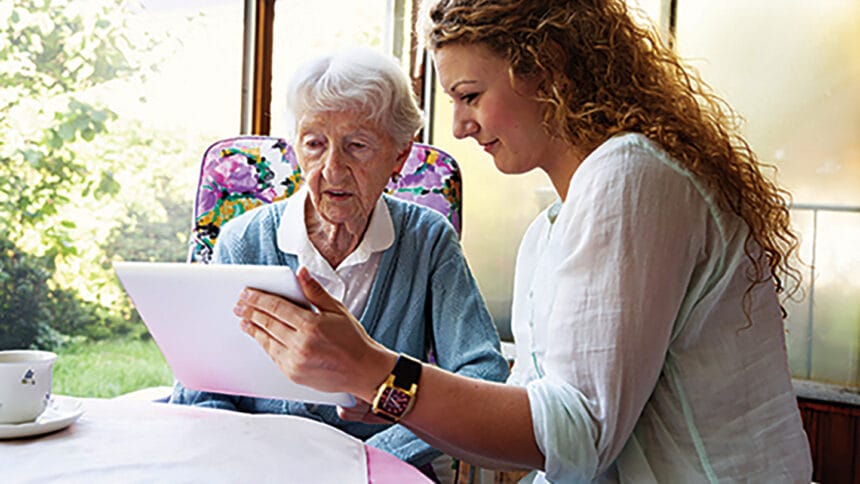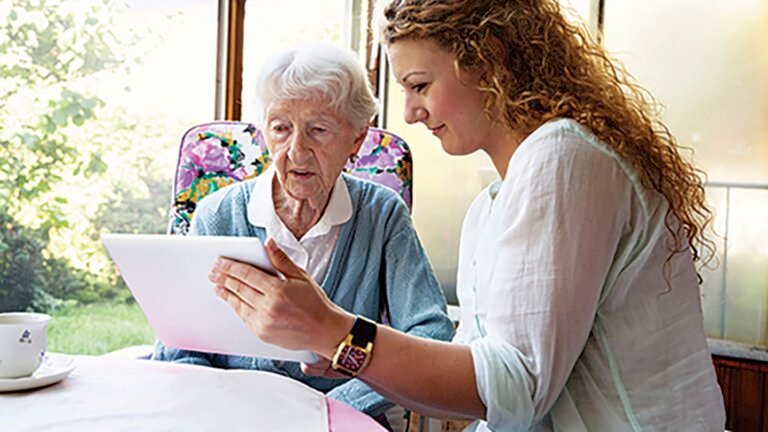
A young caregiver is showing something to a 90-year-old elderly woman on a digital tablet
A new study documents risk factors for hospitalization due to urinary tract infections among new users of sodium glucose cotransporter 2 inhibitors (SGLT2i) who live in nursing homes. Data from the study published on Saturday showed that women, those with a history of urinary tract infections (UTIs) and those who use catheters are at higher risk. Journal of the American Geriatrics Society.
Women have shorter urethras than men, making it easier for bacteria to get into the bladder and cause an infection, and the decline in estrogen that comes with age in women may also increase the risk of UTIs, the authors note.
SGLT2 blocks the reabsorption of filtered glucose to lower blood sugar levels. However, this mechanism can increase glucose levels in the urinary tract, increasing the likelihood of urinary tract infections. Older people, especially those with reduced mobility, such as nursing home residents, are more likely to get urinary tract infections.
The researchers studied people aged 66 years or older with type 2 diabetes who received nursing home care between 2013 and 2018 and were covered by fee-for-service Medicare Parts A, B, or D. New SGLT2i use was defined as someone who started taking an SGLT2i and had not been taking one in the six months prior. The researchers followed individuals’ data from the date they started using the drug until they were hospitalized for a urinary tract infection, stopped taking the drug, dropped out of Medicare, died, or a year had passed.
The mean age of the 1,701 new users of SGLT2i was 77.8 years. The most commonly used SGLT2i was canagliflozin.
During a mean follow-up of 6.1 months, 10.3% of new SGLT2i users were hospitalized for UTI, 12.7% died, and 402% discontinued their medication. Cumulatively, the incidence of UTI with hospitalization was 4.3% at 2 months, 7.1% at 4 months, 9.5% at 6 months, and 15% at 12 months.


